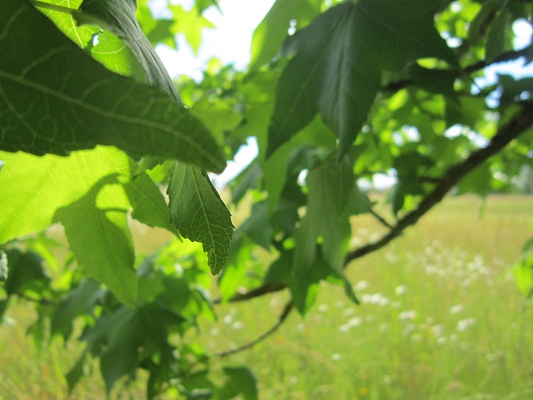But the report's main author said this didn't mean the environment was finding new ways of dealing with man-made climate change, warning the biosphere wouldn't be able to store excess carbon forever.
The three-year study saw scientists put a value on the amount of carbon cycled through the atmosphere from plants and soil "breathing".
During wet years, the Australian landscape "breathes in" more CO2 from the atmosphere than humans put out in greenhouse gas emissions, the report found.
But in dry times, the biosphere "breathes out" an amount almost equal to what it absorbs.
Scientists found that between 1990 and 2011, 2.2 billion tonnes of carbon was soaked up by plants on average every year, a high rate compared to the rest of the 20th century.
"On average the Australian landscape is actually accumulating carbon," the report's author Dr Vanessa Haverd told reporters.
"That effect is driven largely by the fact that carbon dioxide levels in the atmosphere have increased."
Although rising CO2 levels have seen the Australian landscape store more carbon, the ability of plants and soil to cycle through huge volumes of emissions is expected to decline over time.
Nonetheless, this process does provide an "important service" in reducing the impact of our fossil fuel emissions, Dr Haverd said.
"If we didn't have that going on, then there would be far more carbon dioxide actually accumulating in the atmosphere and the rate of climate change would be even greater," she said.
The landmark report also found that Australia's overall CO2 emissions will likely rise if there are more extreme fires in the future.
Fires release carbon at levels on par with emissions caused by mankind, but the overall impact is less because wild blazes consume carbon-rich fuel in the form of plants and shrubs.
Still, forecasts for more extreme and frequent fires are expected to lead to more carbon emissions being released and less stored by the environment.
The study also found Australia exported two-and-a-half times more carbon in fossil fuels in 2009/10 than it burned at home.




-160x160-state_article-rel-cat.png)

-160x160-state_article-rel-cat.png)






-160x160-state_article-rel-cat.png)
-160x160-state_article-rel-cat.png)




